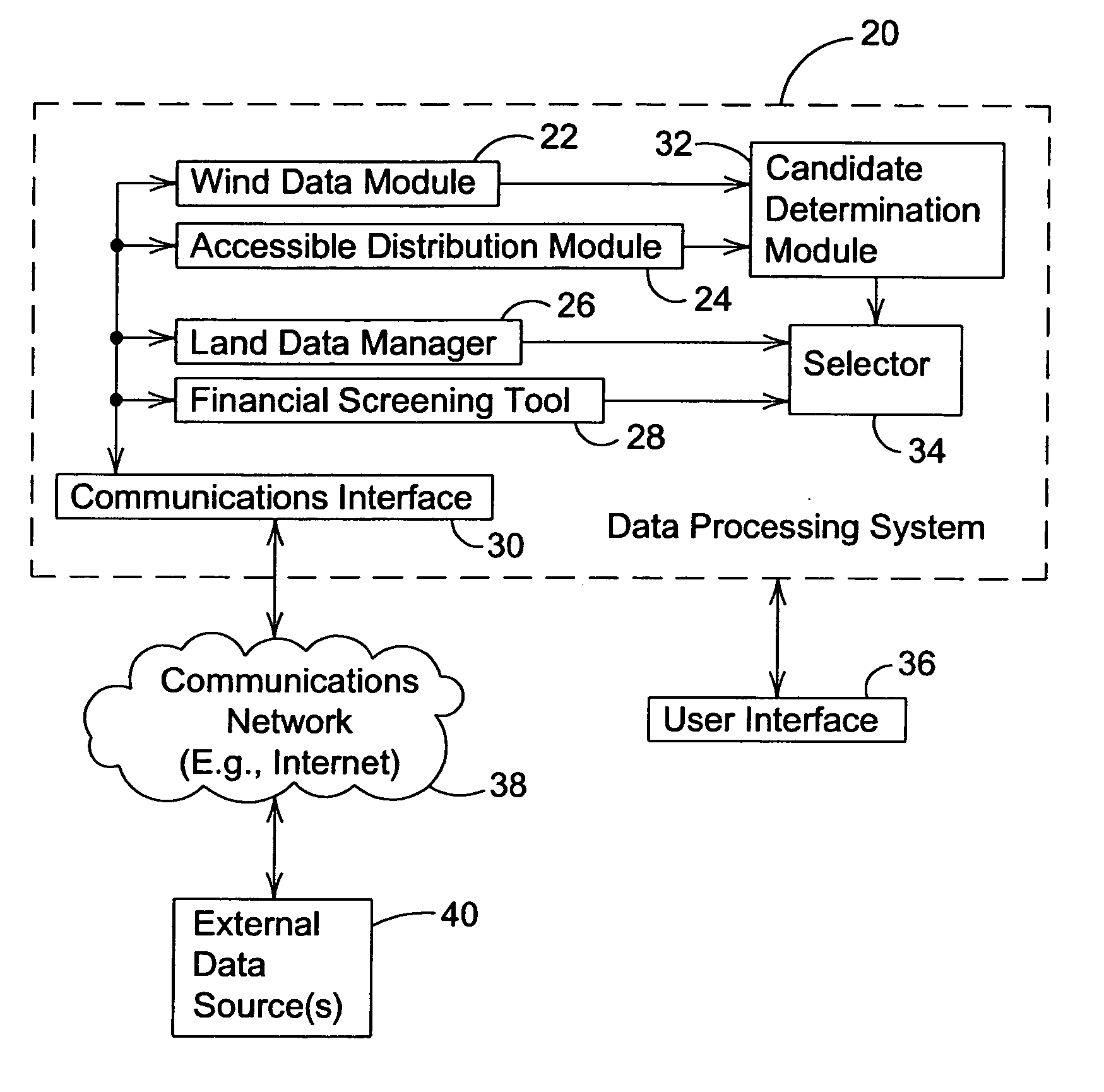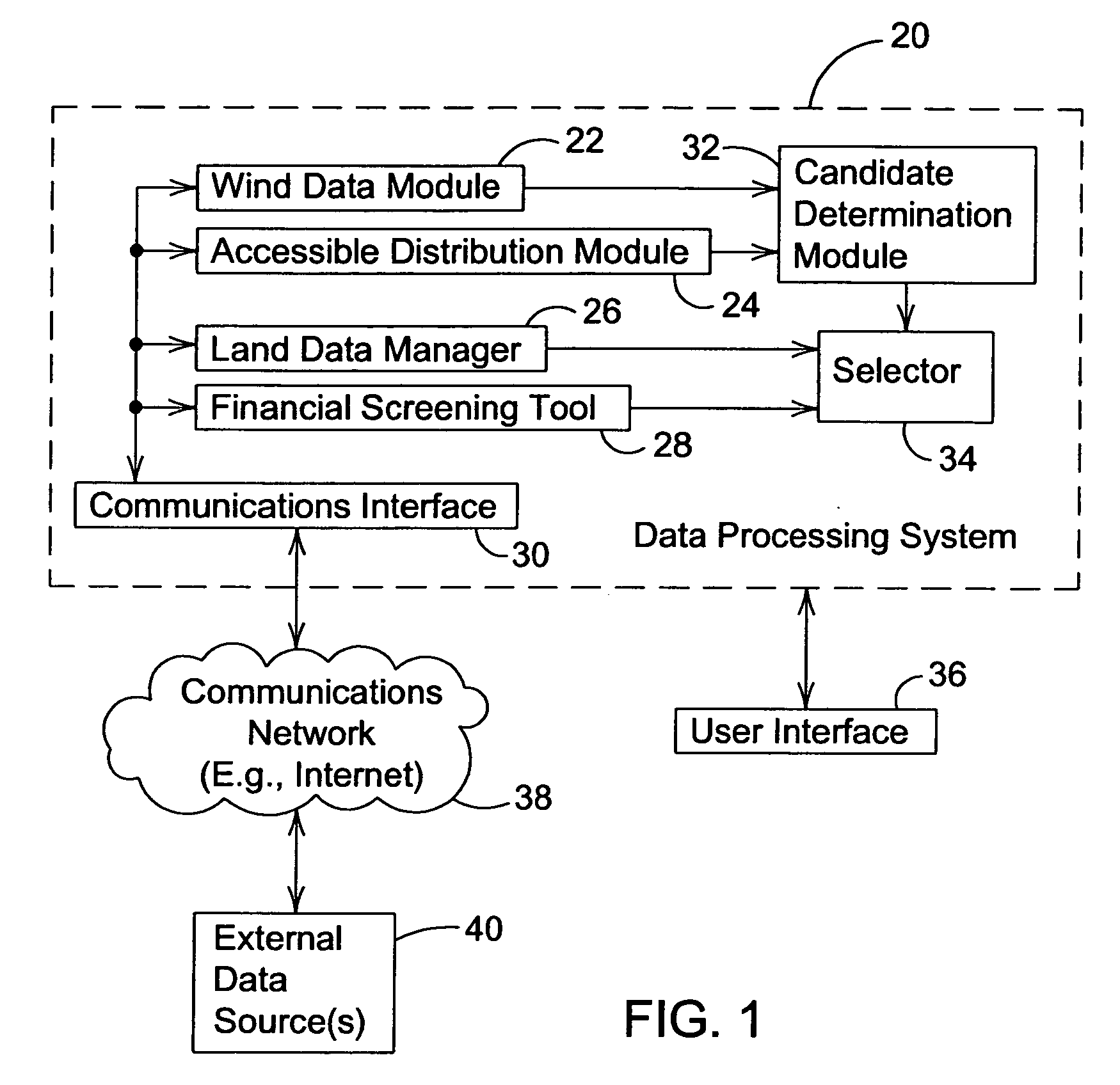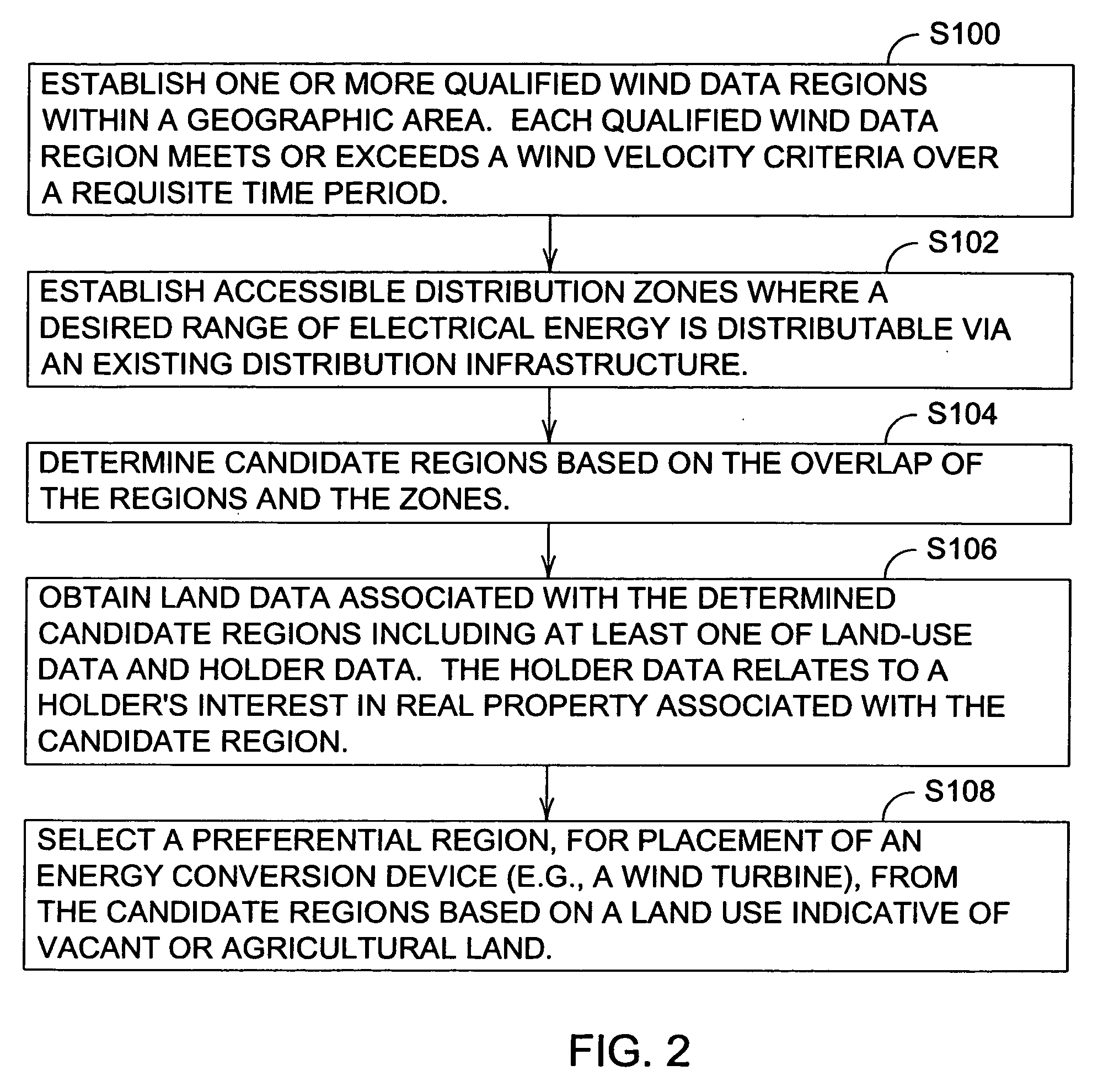Method and system for determining a location of a wind-powered electrical energy facility
a technology of wind power and electrical energy, applied in the direction of instruments, process and machine control, material dimension control, etc., can solve problems such as partial views
- Summary
- Abstract
- Description
- Claims
- Application Information
AI Technical Summary
Benefits of technology
Problems solved by technology
Method used
Image
Examples
Embodiment Construction
[0022] As used herein, the terms “transmission” and “distribution”, and variations thereof, do not refer to and are not limited to any particular voltage range or ranges. The terms transmission and distribution shall be accorded their ordinary dictionary definitions when used as nouns or adjectives. Notwithstanding the foregoing, to clarify the definitions commonly used in utility industry within the United States, “transmission voltage range” refers to above approximately 161 kilovolts; “sub-transmission voltage range” refers to approximately 55 kilovolts to 138 kilovolts; and “distribution voltage range” refers to approximately 33 kilovolts and below.
[0023]FIG. 1 is a block diagram of a system for establishing a wind-powered generation facility. The data processing system 20 is associated with a user interface 36 for accepting input data from a user and for providing output data to a user. The data processing system 20 may communicate via a communications network 38 (e.g., Intern...
PUM
 Login to View More
Login to View More Abstract
Description
Claims
Application Information
 Login to View More
Login to View More - R&D
- Intellectual Property
- Life Sciences
- Materials
- Tech Scout
- Unparalleled Data Quality
- Higher Quality Content
- 60% Fewer Hallucinations
Browse by: Latest US Patents, China's latest patents, Technical Efficacy Thesaurus, Application Domain, Technology Topic, Popular Technical Reports.
© 2025 PatSnap. All rights reserved.Legal|Privacy policy|Modern Slavery Act Transparency Statement|Sitemap|About US| Contact US: help@patsnap.com



